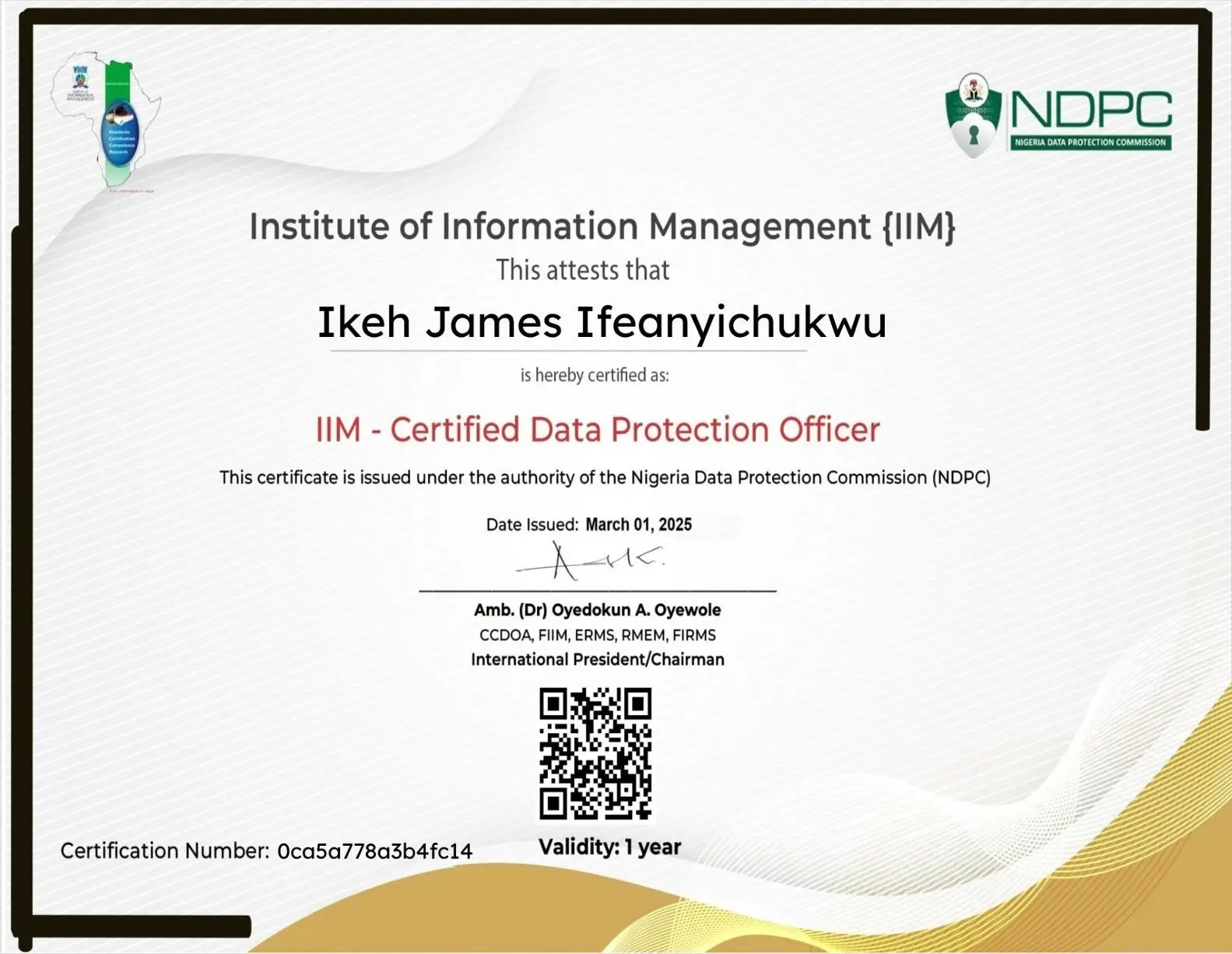Essential Data Security Measures for Compliance and Cyber Defense
Share

In a world where cyberattacks strike every 39 seconds, protecting your business data is no longer optional—it’s a legal and operational necessity. Organizations that fail to adopt strong data security measures risk heavy regulatory fines, reputational loss, and financial ruin.
From GDPR in Europe to NDPA in Nigeria and CCPA in the U.S., data protection laws require organizations to safeguard personal and sensitive data against unauthorized access, disclosure, or loss.
This article breaks down the essential data security measures that every business must implement to stay compliant and defend against cyber threats.
Why Data Security Is Central to Compliance
Data security isn’t just about preventing hacks—it’s about proving accountability. Modern privacy laws like the GDPR and Nigeria’s NDPA require data controllers and processors to demonstrate that they’ve taken “appropriate technical and organizational measures” to protect personal data.
A single weak control can expose your entire compliance posture. For example:
- In 2023, MOVEit, a widely used file transfer service, suffered a massive breach affecting hundreds of global organizations.
- Under GDPR, fines can reach €20 million or 4% of global annual revenue, whichever is higher.
Having strong, auditable security measures ensures regulatory compliance, customer trust, and resilience in the face of attacks.
The 10 Essential Data Security Measures
| Measure | Purpose | Example / Implementation Tip |
|---|---|---|
| 1. Data Encryption | Protects data from unauthorized access, both in transit and at rest. | Use AES-256 encryption; enable HTTPS/TLS for websites and emails. |
| 2. Access Control | Ensures only authorized users access sensitive information. | Implement role-based access control (RBAC) and multifactor authentication. |
| 3. Regular Software Updates | Prevents exploitation of known vulnerabilities. | Automate updates and patch management across all systems. |
| 4. Network Firewalls and Intrusion Detection Systems | Blocks malicious traffic and detects suspicious behavior. | Deploy IDS/IPS and configure network firewalls. |
| 5. Data Backup and Recovery | Safeguards against data loss from attacks or system failure. | Use offsite or cloud backups; test restoration regularly. |
| 6. Endpoint Security | Protects devices like laptops and mobile phones from malware. | Install reputable antivirus and mobile device management (MDM) tools. |
| 7. Employee Awareness Training | Reduces human error, a top cause of breaches. | Conduct phishing simulations and regular cybersecurity awareness programs. |
| 8. Data Minimization & Retention Policies | Limits exposure by reducing the amount of data stored. | Collect only what’s needed and securely delete outdated records. |
| 9. Incident Response Plan | Enables quick detection, containment, and reporting of breaches. | Define roles, contacts, and steps for breach response. |
| 10. Vendor Risk Management | Ensures third parties meet your data protection standards. | Use Data Processing Agreements (DPAs) and conduct periodic audits. |
Legal Frameworks That Demand Data Security
| Law / Regulation | Region | Key Security Requirement |
|---|---|---|
| GDPR (EU) | Europe | Appropriate technical and organizational measures (Article 32) |
| NDPA (Nigeria) | Nigeria | Data security safeguards under Part V |
| CCPA (California) | U.S. | Reasonable security procedures and practices |
| HIPAA (U.S.) | U.S. Healthcare | Encryption, access control, audit logs |
| ISO 27001 | Global Standard | Risk-based information security management system |
Understanding these frameworks helps align your security strategy with compliance expectations.
Building a Cyber Defense Mindset
Cyber defense is more than deploying firewalls—it’s about continuous vigilance.
Here’s how to strengthen your defense posture:
- Adopt Zero Trust Architecture (ZTA): Never trust, always verify access requests.
- Implement continuous monitoring: Use SIEM tools for real-time threat detection.
- Conduct regular penetration testing: Simulate attacks to identify vulnerabilities.
- Document everything: Keep logs for audits and investigations.
- Collaborate with regulators: In Nigeria, report serious breaches promptly to the Nigeria Data Protection Commission (NDPC).
Real-Life Example: Capital One’s $80 Million Lesson
In 2019, Capital One suffered a massive data breach exposing personal data of over 100 million customers.
The breach was traced to a misconfigured firewall in its cloud environment—a basic but costly error.
The bank faced an $80 million fine from U.S. regulators and a major class-action lawsuit. The lesson?
Even the smallest lapse in data security configuration can lead to massive financial and legal consequences.
FAQs
1. What is the most important data security measure for compliance?
Encryption and access control are foundational—they directly align with most legal data protection requirements.
2. How often should a company update its security measures?
At least quarterly, and immediately after any system, vendor, or regulatory change.
3. What’s the difference between data security and data privacy?
Data security focuses on protecting data from breaches, while data privacy governs how that data is collected, shared, and used.
4. Do small businesses need to comply with data security laws?
Yes. All organizations handling personal data, regardless of size, must implement security measures proportionate to their data risk.
Conclusion
Strong data security measures form the backbone of both compliance and cyber defense.
Businesses that invest in encryption, access control, training, and incident response are better equipped to handle the ever-evolving landscape of cyber threats.
In the digital age, security is not just a shield—it’s a strategic advantage.


























Leave a Reply